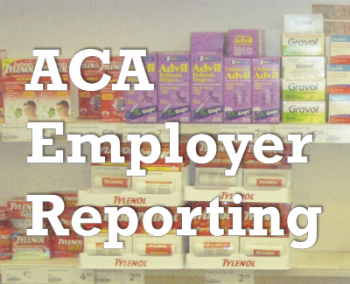 BARB RAND
BARB RAND
HNI Compliance Advisor
The IRC Section 6055 and 6056 reporting requirements, as mandated by the Affordable Care Act, are putting employers' data-management skills to the test.
The feds want proof of minimum essential coverage, and they want to know whether you need to be paying penalties for any employees who didn't get adequate coverage through you.
The IRS, of course, will judge the compliance of your business based on the data you report via certain forms. Failure to comply with the ACA employer reporting reqs could cost up to $200 per return.
Our recent webinar on health coverage reporting requirements got into the nitty-gritty of how to fill out all the boxes. Following are six steps to set up your business for reporting compliance before you even lay eyes on the forms:
1.) Identify sources for data.
When it comes to reporting and filing for the 6055 and 6056 requirements, all the data you need probably aren't housed together. You'll need employee demographic intel, including Social Security numbers, along with details on coverage options. Know what you need and figure out the best way to get it.
2.) If you haven’t yet, start compiling January data. Sooner rather than later is probably your best route.
The ACA employer reporting requirements call for 13 data points — offer of coverage information for each month, January through December, and the total for all 12 months. We recommend compiling these stats monthly. That way, when you get to year's end, you're not struggling to source info that's months old.
3.) Storing the data in an electronic format will more easily facilitate population of the forms.
Do yourself a favor and make sure these data don't only exist (literally) on paper. More than likely, if this info is stored electronically, you'll be able to conduct a mail merge application (or similar function) to populate the forms. The alternative is large-scale hand-data entry, which everyone knows is an invitation for error (especially if left to the 11th hour).
UPDATE: Unfortunately, since this blog was published, the IRS has indicated that they will not be providing mail merge capabilities (see page 36, here: http://www.irs.gov/PUP/for_taxpros/software_developers/information_returns/April_AIR_Webinar_Presentation.pdf)
4.) If you are self-insured and do not maintain dependent social security numbers and/or dates of birth, start soliciting that information now.
A third-party vendor could help manage this task. Collecting DOBs and SSNs of dependents is a new twist in the coverage reporting process that many employers could find overwhelming. Please keep in mind that security of this sensitive information is extremely important, and a third-party vendor should address this issue to your satisfaction.
5.) Early education and communication to employees about the reporting that they will receive, and its purpose, may minimize confusion and communications after the forms are issued.
Be transparent with employees about "the why" of the ACA employer reporting requirements, and level with them about the challenges you're facing in collecting the data. Your people want leaders who are candid, especially during tough projects. At the very least, consider sharing a timeline, a plan of action, and an FAQ to provide clarification on who needs to do what.
6.) Consider partners for form compilation.
Because the reporting forms and instructions still are in draft form, we haven't seen a lot of niche vendors to serve this need. However, it's not yet time to panic! Talk to your payroll provider. If you're fully insured, your carrier likely can share insight. If you're self-insured, hit up your third-party administrator.
UPDATED FEB. 11, 2015: The forms and instructions now are final. They can be found via the following links:
The IRS also has shared best practices for tax preparers related to the individual shared responsibility provisions, including the follow advice:
Click here to read best practices from the IRS (PDF).
We're planning a sequel webinar on this reporting requirement with examples! If you missed the first session, click here to access the on-demand 6055 and 6056 webinar and slide deck (or you can click the button below).
What other questions do you have about the IRC Section 6055 and 6056 reporting requirements? How are you getting your data under control? What best practices can you share? Please sound off in comments!
DISCLAIMER: We hope this blog post gave you an "Aha!" moment, but please don't hold it as legal or tax advice. This information is general in nature, and your specific situation deserves attention from a dedicated legal or tax advisor.
Related Posts:
A Crash Course in 6055 and 6056 Reporting on Your Benefits
ON-DEMAND WEBINAR: Doing More with Less: Developing a Self-Service Culture Using HR Technology
Latest IRS Forms Add to Health Care Reform Requirements for Employers
7 Clues You're Ready for New HR Technology
.png?width=69&height=53&name=Acrisure%20Logo%20(White%20Horizontal).png)

 BARB RAND
BARB RAND
